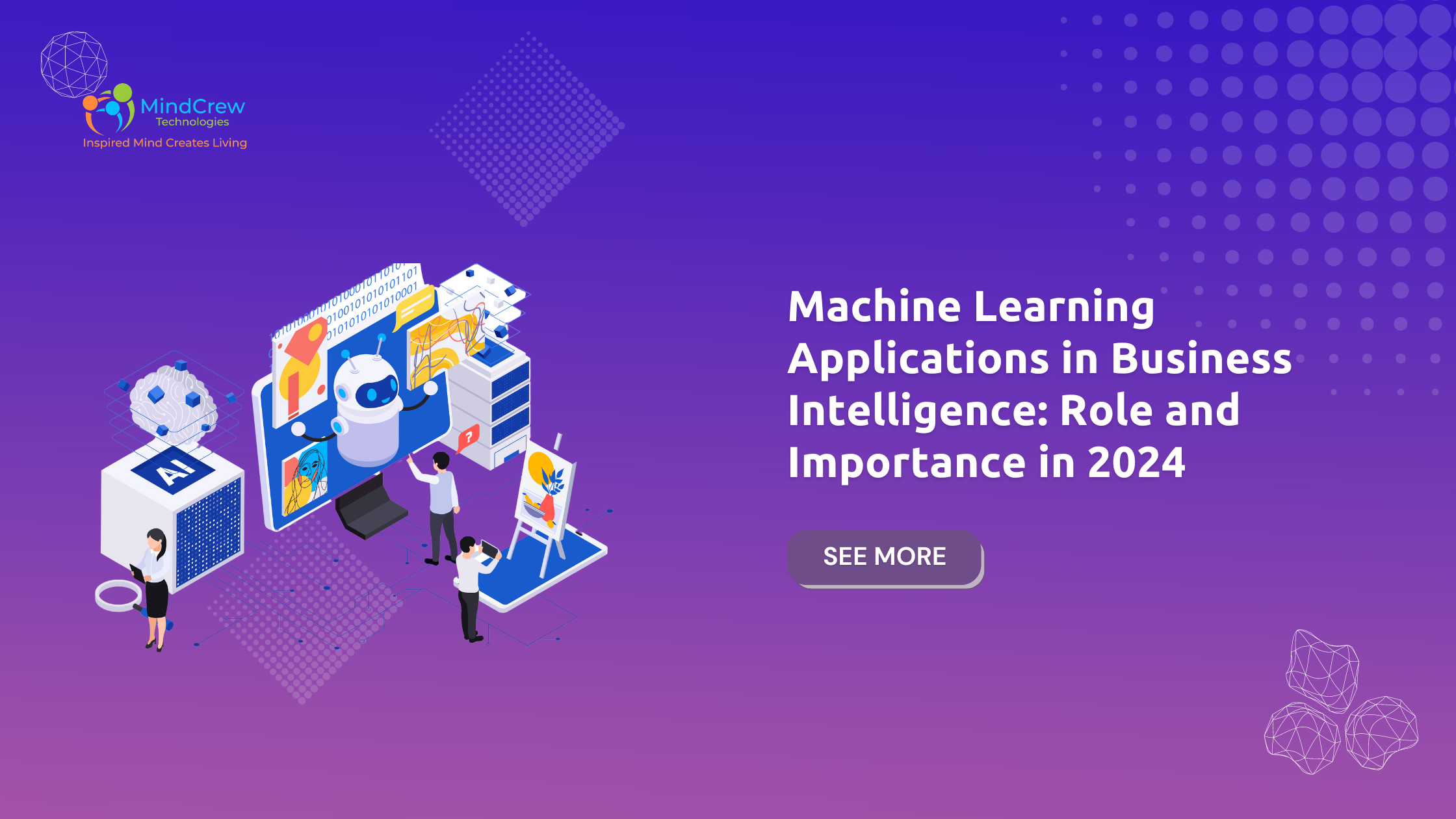Machine Learning Applications in Business Intelligence: Role and Importance in 2024
In today’s data-driven world, businesses are increasingly turning to advanced technologies to gain valuable insights and make informed decisions. One such technology that has revolutionized the field of business intelligence (BI) is machine learning (ML). Machine learning algorithms, capable of analyzing vast amounts of data and identifying patterns, play a pivotal role in enhancing BI processes. This blog explores the various applications of machine learning in business intelligence, its significance in 2024, and the evolving landscape of AI-powered decision-making tools.
Introduction
Business intelligence involves the use of data analysis tools and techniques to extract actionable insights from raw data. Traditionally, BI relied on historical data and manual analysis methods. However, with the advent of machine learning, businesses now have the capability to leverage predictive analytics, automate decision-making processes, and optimize operations like never before.
Understanding Machine Learning in Business Intelligence
Machine learning is a subset of artificial intelligence (AI) that enables systems to learn from data and improve their performance over time without being explicitly programmed. In the context of BI, ML algorithms can sift through massive datasets, detect trends, and generate predictive models that aid in strategic decision-making. This capability is particularly valuable in industries where real-time insights and agility are critical, such as finance, healthcare, and e-commerce.
Key Applications of Machine Learning in Business Intelligence
- Predictive Analytics: Predictive analytics is perhaps one of the most transformative applications of machine learning in BI. By analyzing historical data and identifying patterns, ML algorithms can forecast future trends, customer behaviors, and market conditions. For example, retail companies use predictive analytics to anticipate demand fluctuations and optimize inventory levels, thereby reducing costs and improving customer satisfaction.
- Customer Segmentation: Machine learning algorithms excel in segmenting customers based on their preferences, behaviors, and purchasing patterns. By clustering similar customers into distinct segments, businesses can tailor marketing campaigns and personalize product recommendations. This targeted approach not only enhances customer engagement but also boosts conversion rates and loyalty.
- Risk Management: In industries such as banking and insurance, managing risk is paramount. Machine learning algorithms are employed to detect anomalies, predict credit defaults, and identify fraudulent activities in real-time. By continuously analyzing transactional data and user behaviors, ML-powered risk management systems mitigate financial losses and uphold security standards.
- Supply Chain Optimization: ML algorithms optimize supply chain operations by predicting demand, streamlining logistics, and minimizing disruptions. For instance, logistics companies use predictive modeling to optimize route planning and fleet management, ensuring timely deliveries and reducing transportation costs.
- Personalized Recommendations: E-commerce platforms leverage machine learning to deliver personalized recommendations to customers based on their browsing history, purchase behavior, and demographic information. These recommendation engines enhance user experience, drive sales, and foster customer loyalty by presenting relevant products and content.
Case Studies and Examples
- Case Study 1: Predictive Analytics in Action Company X, a leading retailer, implemented a predictive analytics solution powered by machine learning to forecast seasonal demand fluctuations. By analyzing historical sales data and external factors like weather patterns, the company achieved a 15% reduction in excess inventory and a 20% increase in sales during peak seasons.
- Case Study 2: Customer Segmentation Success Company Y, an online streaming service, used machine learning algorithms to segment its diverse user base. By categorizing subscribers into distinct segments based on viewing preferences and engagement metrics, the company personalized content recommendations and increased viewer retention by 25% within six months.
- Case Study 3: Enhancing Fraud Detection Financial institution Z deployed machine learning models to enhance fraud detection capabilities. By analyzing transactional data in real-time and detecting anomalous patterns, the institution reduced fraudulent transactions by 30% and improved customer trust in its security measures.
Challenges and Considerations
Despite its transformative potential, integrating machine learning into business intelligence comes with several challenges and considerations:
- Data Quality and Integration: ML algorithms rely on high-quality, clean data for accurate predictions and insights. Ensuring data consistency and integration across disparate sources remains a significant challenge for organizations.
- Interpretability vs. Complexity: As ML models become more sophisticated, balancing the complexity of algorithms with the need for transparency and interpretability becomes crucial. Stakeholders must understand how AI-driven decisions are made to build trust and accountability.
- Privacy and Ethical Concerns: The proliferation of AI-powered BI solutions raises concerns about data privacy, algorithmic bias, and ethical implications. Businesses must prioritize ethical AI practices and comply with regulations to safeguard user information and maintain trust.
Future Trends and Innovations
Looking ahead, several emerging trends are poised to shape the future of machine learning in business intelligence:
- Explainable AI (XAI): Innovations in explainable AI aim to enhance transparency and interpretability in machine learning models, enabling stakeholders to understand how decisions are reached.
- Automated Machine Learning (AutoML): AutoML platforms democratize machine learning by automating the model selection, feature engineering, and hyperparameter tuning processes, making AI accessible to non-experts.
- Edge Computing and IoT Integration: The proliferation of edge computing and IoT devices enables real-time data processing and analysis at the network edge, enhancing the responsiveness and scalability of ML-powered BI applications.
- Advancements in Natural Language Processing (NLP) and Computer Vision: NLP and computer vision technologies enable businesses to extract actionable insights from unstructured data sources such as text documents, images, and videos, expanding the scope of BI applications.
Conclusion
In conclusion, machine learning is redefining business intelligence by empowering organizations to harness the power of data for strategic decision-making and operational excellence. By leveraging predictive analytics, customer segmentation, and other ML-driven applications, businesses can gain a competitive edge in dynamic market environments. As AI continues to evolve, embracing ethical AI practices, addressing data privacy concerns, and staying abreast of technological innovations will be key to unlocking the full potential of machine learning in business intelligence.
Key Takeaways
- Machine learning enables predictive analytics, customer segmentation, risk management, supply chain optimization, and personalized recommendations in business intelligence.
- Addressing challenges such as data quality, interpretability, and ethical considerations is crucial for successful ML integration.
- Future trends include explainable AI, automated machine learning, edge computing, and advancements in NLP and computer vision.







